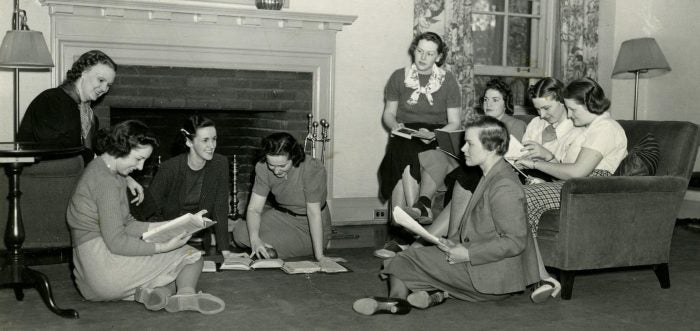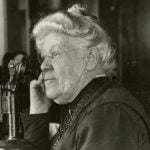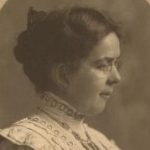In the twentieth century, an increasing number of women began to enroll at U-M. The university and the Alumnae Council made efforts to provide official university housing for these students. They named the new dorms after women from U-M’s history, whom they saw as potential role models for the residents of these halls.

Residents of Helen Newberry Residence, ca. 1938
Making space for new students
Before there was a dormitory system in place, the small number of women who attended U-M had lived in boarding houses along with male students. During the first half of the twentieth century, the university began to take a greater role in women’s housing. The year 1902 saw the establishment of the League Housing system, in which female students were required to live in boarding houses that had first been inspected and approved by the Dean of Women. Five women-only dorms opened between 1915 and 1921. Both League Housing and the women’s only dorms operated as part of the policy of in loco parentis: university administrators acted as stand-in parents to women students, aiming to protect them by closely monitoring their social behavior.
This policy was established during the tenure of Dean of Women Myra Beach Jordan, who also oversaw the establishment of League Housing and construction of the first women-only dorms. When the first large women’s dorm opened in 1930, it was named after Dean Jordan and the first Dean of Women, Eliza Mosher. This was Mosher-Jordan Hall, pictured above.
Because more women were attending U-M, the university was forced to make some dorms co-ed in 1952. Women still lived on separate floors from men, however, and had to abide by strict behavioral rules. Co-ed dorms were established permanently on campus in 1963.
Inspiring young women
University administrators seemed to believe that the best role models for women students would be other women–especially women who, through professional or social activities, had worked to improve other women’s lives. In naming the new halls and houses, they generally chose female alumnae with two key traits:
- women who had contributed to the academic or social life of the university
- women who had promoted women’s issues, nationally or at U-M
Some of the women they chose had distinguished themselves professionally. For others, social responsibilities stood in for professional achievements. Administrators’ choice of role models, in other words, corresponded with the gender-based norms of their time. They valued women not only for the academic contributions that they might make to the university but also for their work in maintaining a sense of community on campus.
Click on the images below to read about the naming of these halls:
|
|
|
|
Image Credits:
- “Mosher-Jordan Hall,Women’s Dormitory, hand-colored postcard published by George Wahr,” Postcard Collection.
- “Residents seated in lounge, Helen Newberry Residence, ca. 1938 [appeared Michiganensian 1938, p. 401],” Alumni Association Records.









